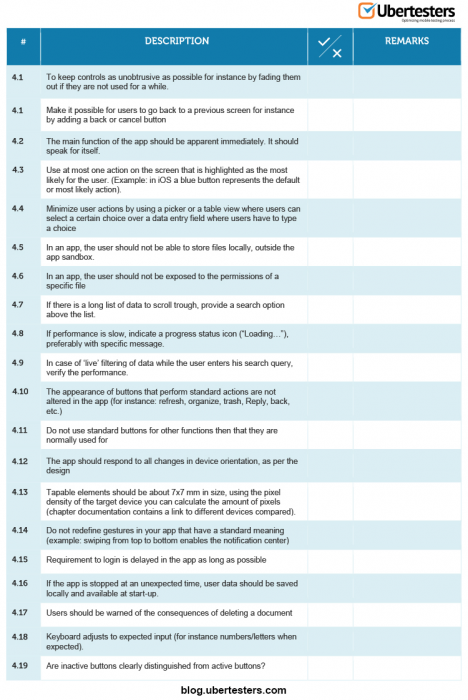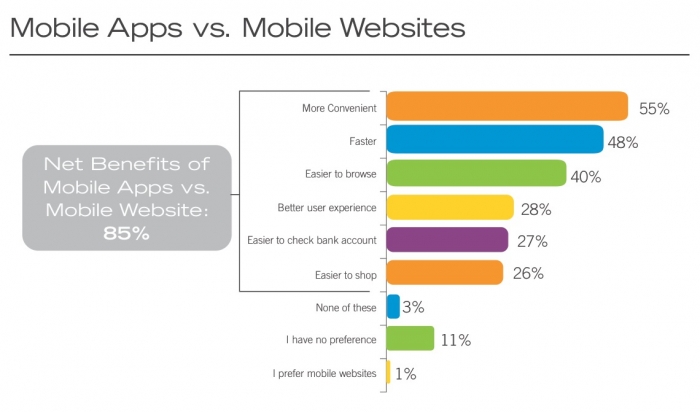5.8 days.
This is how quickly an app gets deleted from its last usage session.
21%.
The percentage of apps used only once within the first 6 months of downloading.
This is the difficult reality in mobile app development, businesses should think about before investing in a custom-made app. After all, spending on a mobile app isn’t necessarily low-cost.
According to Business of Apps, having an iOS app developed will set back businesses by $28,000 while an Android App will require a $23,000 average investment.
However, when a mobile app is done right, the return on investment is worth the initial spend, especially because the mobile app download rate is up by 35% worldwide.

Here are examples of businesses who achieved great ROI on their mobile app investment:
- Airline metasearch engine Aviasales.ru attributes 25% of all airline ticket bookings it gets to its mobile app
- Halifax was able to reach 20 million users with its Home Finder app
- Ikea’s catalog app was downloaded 6.2 million times
- Supermarket chain ASDA’s gets 18% of its total grocery home shopping sales
The results these brands achieved can be attributed to the increased customer engagement that mobile apps are able to deliver to their brands. According to digital business strategist Chris Pentago: “Having the ability to improve customer engagement in any business process is critical to your growth and success. Mobile apps simply make that a bit easier. What is better than having a way on your customers’ mobile devices to instantly reach you! This is what makes mobile apps so unique for businesses. And not only can customers easily engage with your business, but they will also get a better customer experience due to the information you have already collected about your customers via the application.”
To help businesses get a positive ROI on their mobile app development investment, consider the following best practices:
1. Do Extensive Market Research
Just like any other marketing channel, businesses need to understand how their apps will help their customers and prospects. The primary goal of any mobile app development initiative is to fill a gap between a brand and its audience — whether it’s to provide information, make purchasing easier, reach customer service for support, etc.
Value — if a mobile app doesn’t deliver value, it’s doomed. Businesses need to understand exactly how the planned app launch will improve the lives of their customers. With value, brands are able to provide results in advance — an improvement in their customers’ lives even before purchase.
Apptamin, a production house that specializes in creating videos to promote apps, suggests the following tips when conducting market research when launching an app:
- Create a customer avatar
- Identify a specific problem and build an app that provides a solution to that problem
- Browse the top charts and top categories in Google Play Store and App Store
- Use relevant keywords to see which apps return and what solutions they offer
- Look at the featured apps as these are what the app marketplaces deem as cut above the rest
- Look at crowdfunding sites such as Kickstarter to see what ideas are getting support in relevant niches
- Ask potential users through surveys and social media polls
Just like every business idea, the launch of a mobile app needs to undergo a feasibility study to ensure ROI on the app development investment.
2. Spend Time to Ensure Error-Free Functionality
According to Experience Dynamics, 90% of mobile users will stop using an app due to poor performance, while 86% will uninstall the app altogether. Another survey from Compuware revealed that 79% of mobile users will only retry a faulty app once or twice after it fails to work the first time.
Businesses should avoid expediting the launch of their enterprise at the cost of functionality. With the exception of blue-chip apps such as Facebook, people can quickly find an alternative to a buggy app.
Crowdtesting company Ubertesters created five major testing areas for mobile apps:
- Device specific checks
- Network specific checks
- App specific checks
- App user interface checks
- Store specific checks
Each testing category contains several items to check. For example, under the ‘App user interface checks:

3. Put Premium on Security
People need to feel safe when using an app. Headlines such as the one below do nothing to make them feel secure:

By 2021, mobile apps hacking and other security breaches will amount to $1.5 billion.
Data security and protection is an often overlooked responsibility among businesses who launch their own mobile apps. This is especially important for apps that have an order processing functionality since sensitive data such as credit card information is collected and stored. There are also other data privacy laws such as the GDPR that should be considered in the app development process.
Businesses need to work closely with their mobile app developers — whether in-house or outsourced — to ensure that the highest form of security protocols are implemented such as encryption and two-factor authentication. There should also be a way to delete all information in case users lose their device.
4. Keep Testing to Maximize User Experience
It is really baffling that there are still a lot of mobile apps that don’t automatically switch to a numerical keyboard when asking for numerical information such as telephone numbers.
This is a good example of a lapse in making sure the user experience is top notch.
The key here is to understand why a business’ customers would use an app instead of going to that same brand’s website:

The top answers (more convenient, faster, easier to browse, easier to check bank account, easier to shop) all relate to delivering a five-star rating worthy customer experience. A significant chunk of a business’ app development resources should go to perfecting the user experience.
5. Make it Personal
Starbucks is one of the brands that mastered personalization with its mobile app. A Business Insider article explains how Starbuck’s personalization works: “To figure out how to best convince customers to spend and shop more, Starbucks draws from factors like customers’ established purchase history, listed preferences, account info, and even the local weather — think iced coffee deals on a hot day.”
Delivering unique and customized experiences has been a strong theme, not just in the field of mobile marketing, but marketing in general. Mobile apps are a perfect medium to deliver personalized engagement strategies because customers “carry” mobile apps with them all the time.
Nowhere To Go But App
Spending on a business mobile app is a serious investment that requires serious work and attention to detail. With thousands of new mobile apps released every day, businesses need to exert extra effort to ensure their apps are well conceptualized and executed. It may seem like a tall order, but a successful mobile app can bring a new stream of prospects, leads, and sales.



